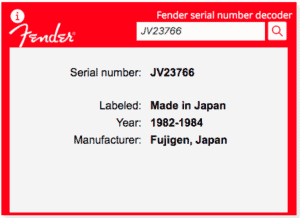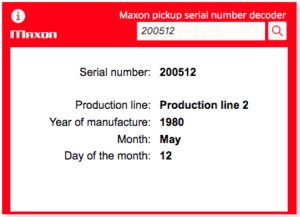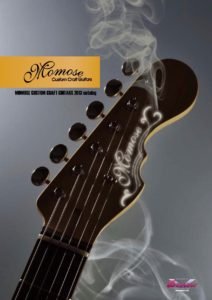|
Fernandes operates in the market under two brand names: Fernandes and Burny.
Originally established in 1969 as Saito Musical Instruments, the company officially registered as Fernandes in 1972. Initially focused on crafting flamenco guitars, the brand quickly expanded its offerings to include acoustic and electric guitars, basses, amplifiers, and assorted accessories. Over time, Fernandes – Burny emerged as one of the most prominent and reputable brands in the realm of Made in Japan guitars.
Unofficially, Mr. Saito enlisted Hidesato Shiino in the early ’70s to develop Fernandes’ guitar lines. Mr Shiino, renowned for his work at Kanda Shokai (link to our article about Greco guitars) and Yamaha, played a pivotal role in shaping the trajectory of Japanese guitar brands. Under his guidance, Fernandes introduced series like FST (Fender Stratocaster) and FTE (Fender Telecaster), producing high-quality replicas that some argue surpassed those of Greco (Matsumoku), Morris, and others.
Similar to Greco, Fernandes likely drew initial inspiration from Fender’s guitar photos. This emulation didn’t diminish the Japanese appreciation for these instruments, which closely mirrored the originals. At that time, Kawai Gakki served as the original equipment manufacturer for Fernandes instruments.
Fernandes also delved into crafting replicas of Gibson guitars under the Burny brand. Early catalogs showcased copies of TV, SG, and Firebird models. What set these replicas apart was their glued necks, a method perfected by Burny, while other brands predominantly used screwed necks. Additionally, Burny offered an SG model with a vibrato feature.
Interestingly, the name ‘Burny‘ stemmed from a mistake. Initially intended as ‘Bunny,’ inspired by a rabbit cartoon, the Japanese inadvertently misspelled it. However, upon realizing the error and understanding the actual meaning of ‘Burny’ in English, they chose to retain the name for the brand.
Furthermore, Fernandes ventured into manufacturing amplifiers conceptualized by Mr. Shiino under the Royal brand. These amps drew inspiration from the Orange brand amplifiers.
In 1975, Fernandes introduced its replicas of the Gibson Les Paul Standard and Custom. These guitars featured a solid mahogany body with a two-piece top, along with a glued neck, closely replicating the Gibson design. Initially produced at the Terada factory, Fernandes later shifted guitar production to Tokai Gakki.
Between late 1978 and 1981, Fernandes adopted a logo known as ‘Stone’ (in Japanese ‘Ishi’), resembling the Japanese character for ‘stone,’ as a tribute to their manufacturing contract with Tokai. During this period, Tokai utilized the finest woods in crafting replicas of Fender and Gibson guitars.
In 1981, Fernandes unveiled the ‘The Revival’ series, distinguished by redesigned logos and headstock inlays to differentiate between Gibson and Fender originals. The series garnered significant success among musicians. Fernandes meticulously analyzed Gibson and Fender vintage guitars down to the smallest details of body, contours, cavities, pickups, and vibratos, achieving remarkable quality in their authentic clones of these originals.
Fernandes gained recognition for its innovative Sustainer, utilizing an electro-magnetic system to sustain string vibrations indefinitely. This sustain system, installed on Fernandes guitars and other brands, left an indelible mark on the history of the electric guitar.





